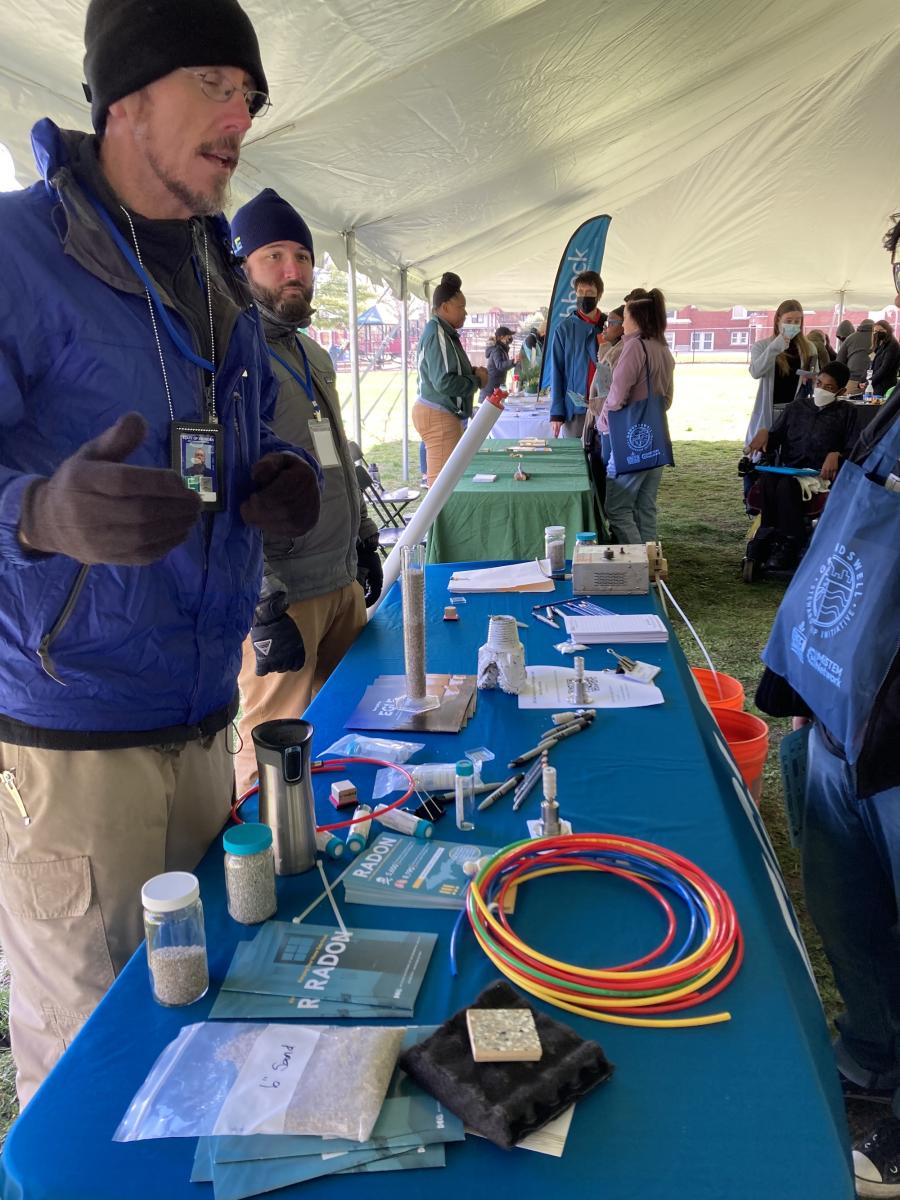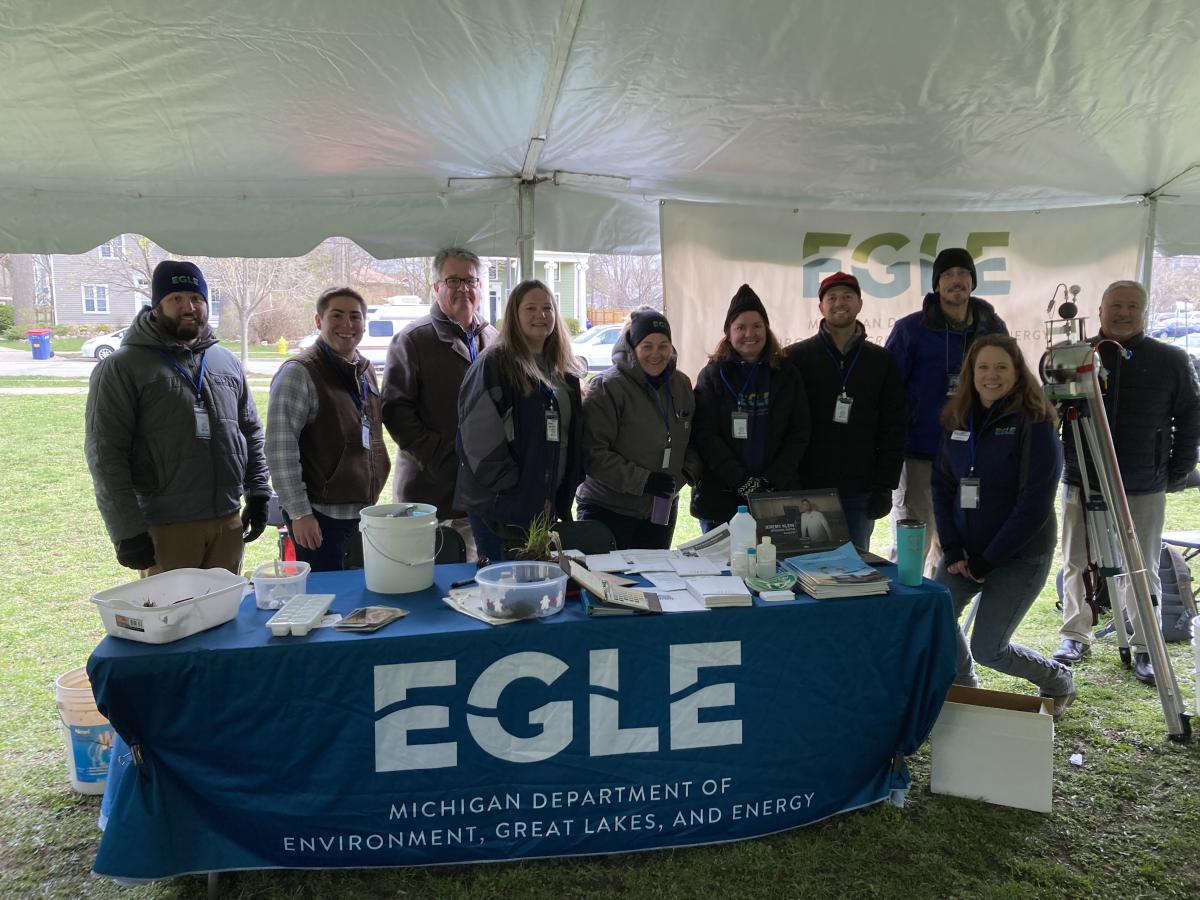The Green Jobs Pipeline is Broken

Welcome to our blog series, CEE-Change, Together. Each month, NAAEE will post narratives from the CEE-Change Fellows as they implement their community action projects and work to strengthen environmental education and civic engagement capabilities, all supporting the mission of cleaner air, land, and water. Join us on their journey! The Civics and Environmental Education (CEE) Change Fellowship is NAAEE’s newest initiative to support leadership and innovation in civics and environmental education in North America. This ee360 program is a partnership between NAAEE, US EPA, and the Cedar Tree Foundation.
In sixth grade, I asked my teachers why I wasn’t allowed to play in the creek at school. They told me it wasn’t safe, and that if they let one kid go in, soon everyone would want to. Anyone who has worked with youth around water knows the truth in that statement. However, with a promise that I would only go to the creek after school (not during recess, when it might encourage others to follow me) and that I would only go down to pick up trash, they agreed to let me go. Years later, I learned that our little creek was a tributary to one of the most polluted streams in our watershed. As an adult, I better understand their hesitance, having worked to bring students to water for years now. I’m also grateful for the teachers who let me learn—as a middle schooler—the power of my own passion and persistence to make a difference for the planet.
My career in environmental education has, in many ways, mirrored the flow of the creek behind my middle school and the river it feeds, the longest in Michigan. My work has ebbed and flowed with the seasons of life, slowing in my children’s younger years and moving quickly again as they’ve grown. It has meandered one way and another, from nature centers to non-profit organizations and from municipal to state government positions, but it has always been oriented toward building stronger connections between people and places so that both can thrive.
Eyes on the Pipeline
Entering the CEE-Change Fellowship, my work had seemed straightforward for a time. During the past several years, clear needs had emerged in the watershed I lived and worked in. Critical jobs in water infrastructure were becoming difficult to fill, and the communities most impacted by infrastructure failures had been historically excluded from opportunities that would have prepared them to take on those needed positions. Through listening, partnership, and planning, organizations in our community had developed a project that would help us build a pipeline between youth living with environmental injustice and the stable, good-paying, community-serving blue and green jobs that were needed in those same communities.
As I began working to build that pipeline, my path took yet another unexpected meander. An opportunity arose to work in a new role, influencing the purpose and practice of environmental education at the state level. I knew the new job was oriented in the right direction, but it was difficult to leave behind the project that had finally seemed poised to come to fruition. While in some ways my career was rushing on, I felt like the idea we had worked to nurture was left behind.

I was hired for the new role and transitioned from coordinating environmental education and public outreach around stormwater issues for my local watershed to coordinating statewide environmental education programs around air, land, water, climate, and energy for the Michigan Department of Environment, Great Lakes, and Energy (EGLE) in 2021. Having worked in my statewide role for a full year now, I can see that while my previous specific project remained stymied, seemingly swirling in a slow back eddy, the overall work continued to move and swell with possibilities.
State staff working in environmental management are allowing me to interview them for a new career series, where they share their diverse paths to environmental careers and their advice for young people following in their footsteps. High schools have invited our staff to career fairs, where we can help widen students’ horizons of what green jobs look like. EGLE staff who are passionate about educating, supporting, and mentoring youth interested in environmental careers are working with me to create resources that support more of our staff in interacting with youth. Partners in industry, education, and social science sectors have invited EGLE’s support of their innovative programs that help young people to engage in environmental research and action to solve local problems in our state.
We’ve been able to support students exploring careers in chemistry and water resources by partnering on the H2O Q program for middle schoolers with our Environmental Education Lending Station. EGLE’s Office of the Great Lakes has worked with the Michigan Department of Education and the MiSTEM Network to launch the From Students to Stewards program that works to institutionalize K–12 place-based education focused on Great Lakes Literacy Principles. Statewide and local EGLE staff support teachers and students around the state in environmental research and action through partnership in local hubs of the Great Lakes Stewardship Initiative.
The Pipeline Metaphor Is Broken
None of this was exactly what I had expected or planned as part of my workforce development efforts as a CEE-Change Fellow, but it all feeds the same stream: preparing young people for life and for work that makes a difference for their places. I started to realize that my idea of a “pipeline” project may have been more narrow than I realized.
In a session at the NAAEE Annual Conference in Tucson in October 2022, Frank Niepold and Bart Merrick from NOAA posited that we need a new metaphor for environmental workforce development. The “Pipeline” metaphor, like so much of our nation’s actual water infrastructure, is broken. It assumes a single path for a defined group of people, built toward specific training that fills a predetermined workforce need.
The Pipeline metaphor no longer holds water, however, in a world where our global connectedness and the widespread impacts of climate change mean that we need to reimagine what a green job' actually looks like. While there are clearly needs in STEM-related fields, we need to recognize that all kinds of jobs are needed to build a healthy, just, and resilient world that serves all of us well. That single pipe, leading a select few people to a select few green careers, does not reflect reality.
The Braided River Approach to Developing a Green Workforce
Our NOAA friends introduced a new metaphor for us to consider: the Braided River. Like the Pipeline, it recognizes that we do have an overarching workforce development goal: to prepare young people to work in ways that benefit people and the planet. But unlike the Pipeline, the Braided River recognizes the myriad streams that converge to achieve that goal. It recognizes the varied educational pathways that can lead to a green job, the many people who play a role in helping young people discern their best path, and the way that our unique physical places influence the needs and opportunities in our communities.

The Braided River metaphor resonates well with the complex realities of our world. It provides a more open interpretation of what it means to work for the earth and for each other, and it recognizes the different ways we can approach preparing youth to take their place in this work. It spurs more creativity, more flexibility, and more generosity of mind toward our future, which allows many more sources of knowledge, practice, and opportunity to flow into our collective work.
That’s what I see as the beauty of connecting place-based environmental education with civic engagement. It doesn’t predetermine a path of action but helps learners understand their own community’s needs and the meaningful ways they’re able to give back while honoring their own strengths. It helps us all to, as Robin Wall Kimmerer says when describing the purpose of education in Braiding Sweetgrass, “learn the nature of our own gifts and how to use them for good in the world,” much like my middle school teachers allowed me to do back in sixth grade.
The result of a Braided River approach to green workforce development is a better practice of environmental education, a more honest and fruitful engagement with each other, and a wider, more beautiful community of practice than a Pipeline could ever provide.






